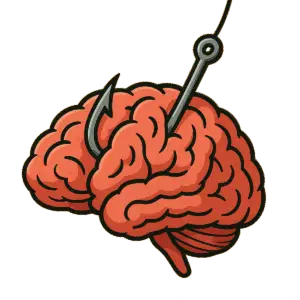Problem Gambling Prevention
& Financial Literacy for Teens
Gambling Is NOT Magic is a high-energy, interactive presentation designed to help teens see the truth behind gambling, gaming, and money—and teaches smart saving and investing habits.
🎯 Overview
Gambling Is NOT Magic is a high-energy, interactive presentation designed to help teens separate the illusion of gambling from its reality. As a high school speaker on problem gambling prevention Robert Hackenson Jr. uses magic, illusions, humor, and relatable stories, to engage students. With a captivated audience Robert he exposes how gambling and gaming industries create excitement, disguise risk, and use psychology and technology to keep people hooked.
However, students don’t just learn what not to do—they learn how to build healthy financial habits and understand that smart money management is the real magic.
As seen/heard on:

Meet Robert Hackenson Jr.: The “Edutainer” Students Actually Listen to
For over 20 years, Robert has spoken in 49 states, multiple Canadian provinces, and around the world delivering programs that students describe as “real,” “funny,” and “eye-opening.” He’s not just a speaker—he’s an edutainer. Using magic, illusions, storytelling, and humor, Robert captivates students while revealing the psychology behind decision-making. Every illusion reinforces a life lesson. Every laugh opens a window for self-reflection. As a high school speaker on problem gambling his goal: to make students feel seen and understood—and empower them to make better financial choices.
What Students Will Learn
🎩 Perception vs. Reality: How Gambling Hooks the Brain
 Gambling often looks fun and harmless: scratch tickets, fantasy sports, eSports skin betting, and online gaming with microtransactions. But beneath the entertainment lies a system built on brain chemistry and behavior manipulation.
Gambling often looks fun and harmless: scratch tickets, fantasy sports, eSports skin betting, and online gaming with microtransactions. But beneath the entertainment lies a system built on brain chemistry and behavior manipulation.
Robert helps students uncover:
- How “near wins,” streaks, and reward systems activate the same dopamine loops as addiction.
- Why gaming and gambling now overlap through loot boxes, online casinos, and in-app purchases.
- The role of advertising and social media in normalizing risk-taking behaviors.
- The math and probability illusions behind gambling “wins.”
Through live illusions, students see how easily perception can be manipulated—and how awareness is the first line of defense.
🕹️ The Gaming Industry’s New Frontier
 Today’s gaming and gambling industries use the same design techniques: instant gratification, random rewards, and algorithmic engagement. Teens are often targeted before they realize it.
Today’s gaming and gambling industries use the same design techniques: instant gratification, random rewards, and algorithmic engagement. Teens are often targeted before they realize it.
Robert’s presentation connects the dots between:
- Video games and gambling behaviors: loot boxes, tokens, and paid spins.
- Streaming and influencer culture: how “fun” online gambling content glamorizes risk.
- Microtransactions: small digital payments that condition spending habits.
- Easy access: mobile apps and crypto casinos that remove traditional barriers.
Students walk away understanding how subtle design choices can train their brains for impulsive spending—and how to stay in control.
 💸 Real Money Lessons: Financial Literacy for Teens
💸 Real Money Lessons: Financial Literacy for Teens
Beyond prevention, this program empowers teens to make smart financial choices.
Robert shows how the same excitement that drives gambling can be redirected into earning, saving, and investing responsibly.
Students learn:
- The difference between chance and strategy in making money.
- How compound interest and consistent saving outperform luck.
- Simple budgeting and saving tools for teens.
- How to think long-term about credit, debt, and real financial independence.
By blending engaging illusions with financial education, students discover that discipline—not chance—is how real success happens.
🧠 Why Schools Book “Gambling Is NOT Magic”
🏫 Presentation Format & Details
💬 Frequently Asked Questions
- Aligns with financial literacy and prevention education standards.
- Integrates seamlessly into wellness, math, or economics curricula.
- Encourages responsible decision-making and emotional regulation.
- Supports social-emotional learning (SEL) goals around self-awareness and self-management.
- Builds financial confidence and critical thinking skills.
- Audience: High School (Grades 9–12)
- Length: 45–60 minutes
- Delivery: In-person, hybrid, or virtual
- Ideal for: Wellness weeks | Financial literacy classes | Red Ribbon Week
Robert provides all necessary tech equipment and tailors each presentation to your school’s audience and learning goals.
Q1: What is the main focus of the Gambling Is NOT Magic presentation?
It helps teens understand how gambling and gaming influence behavior, showing how easily perception can be manipulated and encouraging smart financial decision-making.
Q2: Does it only talk about gambling?
No. It connects gambling psychology to gaming, social media, and impulsive spending habits, giving students broader awareness of digital and financial traps.
Q3: Is this program part of financial literacy education?
Yes. It meets financial literacy and prevention standards by teaching budgeting, saving, and long-term investing basics.
Q4: Can it fit into a larger wellness or prevention event?
Absolutely. Schools often schedule this alongside substance awareness or digital citizenship programs for a full-day or multi-topic event.
Request More Information and Pricing Options
Help your students see through the illusion of easy money and build habits for lifelong financial success. Give them a high school speaker on problem gambling prevention and smart money management skills today!
Flat Day Rate Pricing Option
 The flat day rate offers up to 4 presentations within 24 hours for 1 flat rate. These presentations can be on different topics, for different grades, at different schools, and can include a parent/community night. This allows schools to work together and maximize budgets and resources.
The flat day rate offers up to 4 presentations within 24 hours for 1 flat rate. These presentations can be on different topics, for different grades, at different schools, and can include a parent/community night. This allows schools to work together and maximize budgets and resources.
